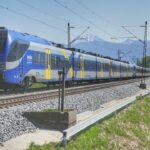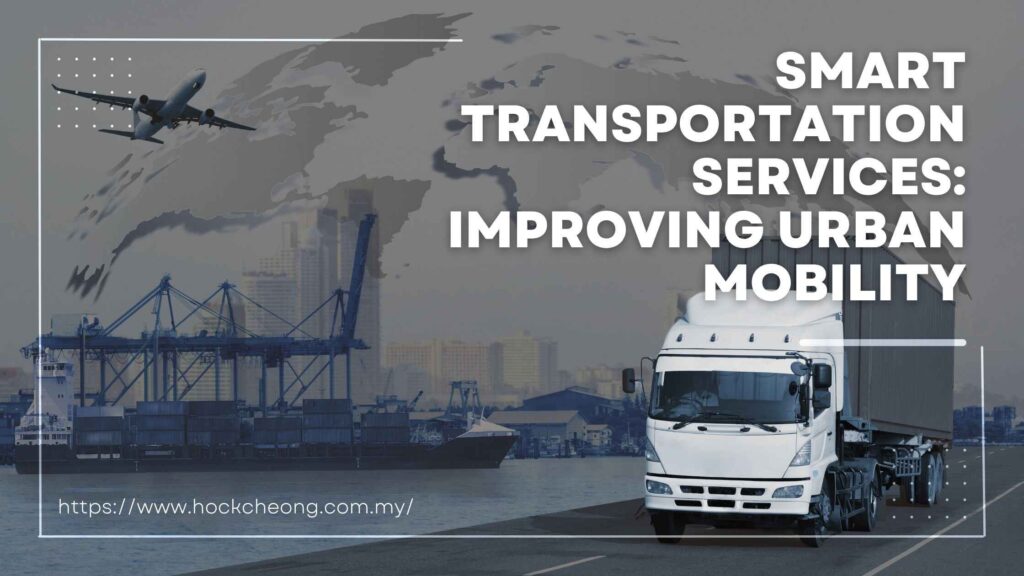As cities around the world grapple with growing populations and increased congestion, the need for smarter, more efficient transportation solutions has never been greater. Urban mobility is no longer just about getting from point A to point B—it’s about doing so in a way that’s fast, reliable, environmentally friendly, and convenient for everyone. This is where smart transportation services come into play, offering innovative ways to move people and goods while transforming the way cities operate.
What Are Smart Transportation Services?
Smart transportation services use technology, data analytics, and connectivity to optimize the movement of people and goods within urban areas. These services integrate various modes of transportation—such as buses, trains, shared bikes, ride-hailing apps, and even autonomous vehicles—into a seamless, efficient system. The goal is to reduce traffic congestion, lower emissions, improve safety, and enhance the overall user experience.
Examples include:
- Real-time transit tracking apps
- Dynamic traffic light systems
- Integrated fare payment systems
- Smart parking solutions
- Ride-sharing and micro-mobility platforms
The Urban Mobility Challenge
Cities face several mobility challenges:
- Traffic congestion: Increased vehicle usage clogs roads and lengthens commute times.
- Air pollution: More cars mean more carbon emissions and poorer air quality.
- Public transport limitations: Overcrowded or unreliable services can push people toward private vehicles.
- Accessibility gaps: People in remote or underserved areas may lack convenient transit options.
These issues not only affect quality of life but also hinder economic productivity. Smart transportation systems aim to address these challenges through digital innovation and data-driven solutions.
Key Components of Smart Transportation
- Real-Time Data and Analytics
Smart sensors, GPS technology, and mobile apps collect and analyze data on traffic flow, vehicle movement, and rider demand. With this data, transportation authorities and service providers can:
- Adjust routes dynamically
- Predict delays
- Improve fleet management
- Alert riders of real-time changes
For example, transit apps that show live bus and train arrival times help commuters plan more efficiently and reduce time spent waiting.
- Integrated Mobility Platforms
Smart transportation encourages the integration of various travel modes through Mobility-as-a-Service (MaaS) platforms. Users can plan, book, and pay for a multi-modal trip using a single app, which may include:
- A shared e-scooter to the train station
- A commuter train into the city
- A short bus ride to the final destination
This seamless integration reduces dependency on personal vehicles and promotes public and shared transportation options.
- Eco-Friendly Transport Options
Many smart transport initiatives support electric and low-emission vehicles. Cities are investing in:
- Electric buses and taxis
- Charging stations for EVs
- Incentives for green fleets
Micro-mobility services—such as electric scooters and bikes—are also gaining traction as low-emission, last-mile solutions, especially in densely populated areas.
- AI and Predictive Technology
Artificial intelligence and machine learning play a major role in analyzing travel patterns and predicting future mobility needs. AI can:
- Optimize traffic signal timing
- Suggest alternate routes to avoid congestion
- Forecast transportation demand based on weather, events, or historical trends
Predictive insights help cities make proactive decisions and better allocate resources.
- Smart Parking Solutions
Searching for parking is a major contributor to urban congestion. Smart parking systems use sensors to detect available spaces and guide drivers directly to them via apps. These systems also enable digital payment, dynamic pricing, and parking enforcement, all of which streamline urban traffic flow.
Benefits of Smart Transportation Services
Implementing smart transportation services leads to a wide array of benefits:
✅ Reduced Traffic Congestion
Optimized traffic signals, real-time updates, and alternate route suggestions ease road congestion and shorten travel times.
✅ Enhanced Commuter Experience
Riders enjoy greater convenience and reliability with real-time tracking, seamless payments, and multimodal connectivity.
✅ Lower Environmental Impact
Encouraging public and shared transportation, along with electric vehicle integration, reduces greenhouse gas emissions and promotes sustainability.
✅ Cost Efficiency
Smart systems allow for more efficient allocation of transport resources, reducing operational costs for service providers and infrastructure expenses for governments.
✅ Improved Accessibility
By expanding mobility options and integrating services, smart transportation can reach underserved communities, improving equity in access to transit.
Real-World Examples
Several cities worldwide are already leading the way in smart urban mobility:
- Singapore: Uses AI-driven traffic management and a unified transport payment system.
- Helsinki, Finland: Pioneered the Mobility-as-a-Service concept, allowing users to plan and pay for multimodal journeys in one app.
- Barcelona, Spain: Implements smart traffic lights and eco-friendly transport zones to reduce congestion and pollution.
- Los Angeles, USA: Uses data from sensors and cameras to improve traffic signal synchronization and reduce delays.
The Road Ahead
As cities continue to evolve, smart transportation will play a crucial role in shaping livable, efficient, and environmentally responsible urban environments. Investment in digital infrastructure, cross-sector collaboration, and public engagement will be essential to ensure that these systems are inclusive and sustainable.
While challenges such as data privacy, cost, and regulatory frameworks remain, the overall trajectory is clear: urban mobility is becoming smarter, greener, and more connected.
Conclusion
Smart transportation services represent the future of urban mobility. By leveraging technology and data, cities can overcome transportation challenges, reduce environmental impact, and improve the daily lives of their citizens. As more urban centers embrace these innovations, we move one step closer to creating cities that are not only smarter—but also more livable, inclusive, and sustainable.
- Smart Transportation Services | Enhancing Urban Mobility with Technology
- Discover how smart transportation services are transforming urban mobility. Learn about real-time data, AI, eco-friendly transport, and integrated mobility solutions shaping the future of city travel.
- Freight Forwarder Service, Malaysia Logistics
Related posts:
 126 km Haryana Orbital Rail Corridor Announced: Major Boost to Connectivity, Land Prices Expected to Rise
126 km Haryana Orbital Rail Corridor Announced: Major Boost to Connectivity, Land Prices Expected to Rise
 Top 10 Places to Visit During a Gujarat Tour for Nature Lovers
Top 10 Places to Visit During a Gujarat Tour for Nature Lovers
 What to Look for in Affordable Umrah Deals from the UK: A Complete Checklist
What to Look for in Affordable Umrah Deals from the UK: A Complete Checklist
 Hidden Treasures of Andheri: Exploring the Charm of Manish Nagar Shopping Center
Hidden Treasures of Andheri: Exploring the Charm of Manish Nagar Shopping Center
 Best National Parks in Sasan Gir for Safari and Adventure Seekers
Best National Parks in Sasan Gir for Safari and Adventure Seekers
 The Complete Guide to Stress-Free Airport Taxi Transfers | Crown Travel
The Complete Guide to Stress-Free Airport Taxi Transfers | Crown Travel
 7 Reason To Plan A Stay At Panchgani – Sorina Hillside Villas
7 Reason To Plan A Stay At Panchgani – Sorina Hillside Villas
 A1A Moving Company – Reliable Movers in Corsicana, TX You Can Count On
A1A Moving Company – Reliable Movers in Corsicana, TX You Can Count On








